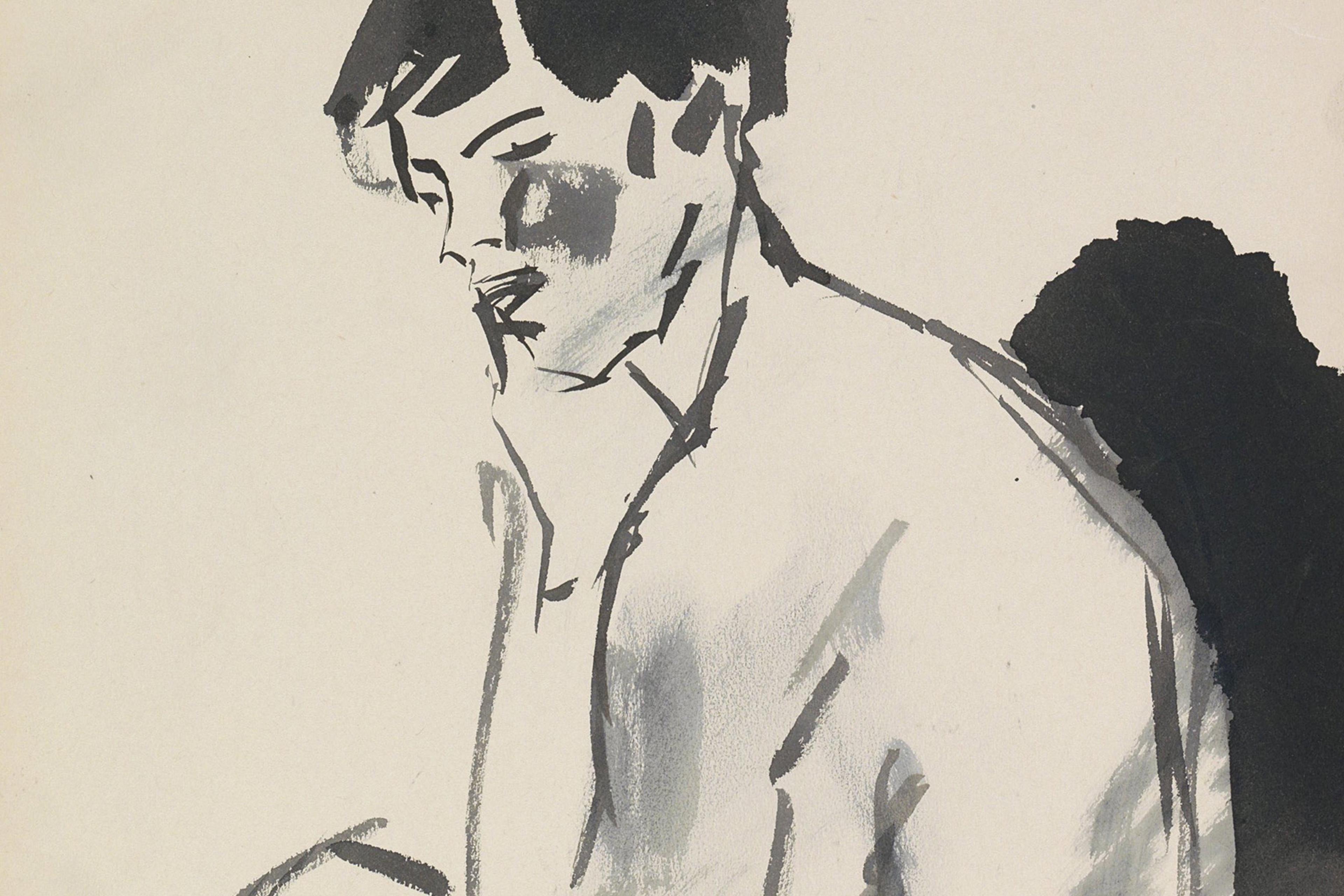‘My bulbous nose makes me look like a monster,’ Blair said, staring into her lap as she sat in front of me.
Blair did not, in fact, look like a monster. Her nose was well proportioned for her face. She had been told by countless people before that there was nothing wrong with her nose and that it suited her well, but she struggled to believe them. Blair (whose name has been changed here for anonymity) often felt like these people were just trying to be polite, or that they had to compliment her because they were her friends or family.
Each of us faces pressures with regard to our physical appearance; by one estimate, nearly three-quarters of people wish that they could change the way they look. Body dissatisfaction is so prevalent that researchers often refer to it as ‘normative discontent’ – it’s more common to dislike your body in some way than to like your body as it is. So was Blair just dissatisfied with her nose? Or was there something more going on?
When Blair looked in the mirror, her eyes were immediately drawn to her nose. She would constantly fiddle with it to feel its proportions or to see if she could flatten the bulb on the end. She examined herself from different angles and under various lights, to see what she looked like from other people’s perspectives. These mirror-checking sessions left her feeling angry, dismayed and hopeless.
Blair was also afraid that when she left the house, people would stare at her and think to themselves how terrible she looked. Because of these fears, she had pulled out of many social events, missed lectures at university, and even quit jobs, leaving her feeling isolated and alone. The more time she spent at home, the more she noticed herself feeling preoccupied and fantasising about all the ways she could ‘fix’ her nose – and how doing so would make her life so much better.
This was not typical body dissatisfaction. Blair was struggling with body dysmorphic disorder (BDD), a common and debilitating psychiatric condition in which someone becomes fixated on perceived flaws in their physical appearance. This fixation can involve any bodily feature, but commonly centres on the skin, facial features such as the nose or teeth, hair, genitals, or bodily proportions. BDD affects up to 2.9 per cent of the population, with even higher rates in certain settings, such as cosmetic and dermatology practices and among bodybuilders. While some people mistakenly assume that it predominantly affects females, research suggests that BDD occurs in men and women at comparable rates.
BDD differs from more common body-image concerns in a few important ways. First, the degree of distress experienced is often out of proportion to the perceived flaw. I’ve worked with patients who have refused to leave the house for fear of people seeing facial ‘scars’ that were completely unobservable to me. When questioned about it, they would reply: ‘Maybe you can only see it from my angle, or under the lights in my bathroom.’ Worries about the perceived flaws can sometimes take up many hours a day.
People with BDD also tend to engage in compulsive behaviours to check, fix or hide aspects of their appearance. This can include excessive checking in cameras, mirrors and other reflective surfaces to examine the ‘flaw’ – or avoiding mirrors altogether. Other common behaviours include camouflaging with makeup, hats, scarves or other coverups, touching or feeling the feature to see if it’s changed, or asking other people for reassurance.
Many people with BDD truly believe that they are ugly, and see it as a physical problem
Those with BDD commonly try to avoid the attention of other people for fear of negative evaluation. In extreme cases, someone might not leave home for days or weeks at a time. Others may avoid particular events or places, like parties or spaces with bright lighting, where they may be more exposed. Or they might not avoid events completely, but feel that they need to engage in extensive rituals to prepare themselves, such as making sure their hair and makeup looks ‘perfect’ or spending hours choosing the right outfit. They might attend an event but spend most of it in the corners or darker areas of the room to avoid being seen.
Many of my patients also report feeling distracted and preoccupied while they’re out at a social event, with thoughts circling around in their mind such as: She just glanced at my nose – she’s definitely thinking about how massive it looks. Or: I’m so disgusting, I can’t believe I left the house today. They’ve been told that they come across as distant and aloof when, really, they are just overwhelmed with anxiety that their flaws are being revealed.
Although the symptoms commonly develop in adolescence, getting a diagnosis and psychological treatment for the condition often takes longer than a decade. One reason for this is a lack of community awareness and understanding of BDD: it remains lesser known than conditions such as anorexia nervosa or schizophrenia, despite being more common than both of these combined. Like Blair, many people with BDD truly believe that they are ugly, and see it as a physical rather than a psychological problem. This can lead them to expensive treatments and skin products, cosmetic procedures, or surgeries to try to change the way that they look in the hope that they will feel better about themselves.
There isn’t just one factor that causes BDD; it’s a complex interplay of factors. Studies have shown that the condition runs in families, indicating a genetic component. Environmental factors may also play a role in its development. For example, people who have experienced bullying related to their appearance may be at increased risk of developing the disorder. Research suggests that people with BDD have experienced childhood maltreatment or trauma at higher rates than those without the condition. Emotional abuse could impact a person’s relationship with their body through the internalisation of criticism (eg, a young child who was called ‘chubby cheeks’ develops a preoccupation with the proportions of their face as they get older). People who are physically or sexually abused may become ashamed and angry at their bodies for being the target of the abuse.
Neurobiological factors might also contribute. For example, research has shown that individuals with BDD may have abnormalities in the brain’s processing of visual information, which are associated with a hyperfocus on specific visual details, as opposed to the ‘big picture’. This might result in a heightened sensitivity to perceived defects in one’s appearance.
The majority of people with BDD seeking cosmetic treatment do not get any benefit out of it
Finally, societal factors play an important role in the development of BDD. In many cultures, individuals who do not meet certain beauty standards are stigmatised, which feeds into the worries of those with BDD. And the rising popularity of photoediting/filtering technologies is contributing to ever-more unrealistic standards of beauty. Individuals who are exposed to these images can develop heightened expectations about how they should look, leading to greater distress and preoccupation with perceived flaws.
For Blair, social media was a minefield. She began to look at more and more images of women she felt had ‘perfect noses’. They seemed to confirm her sense that everyone’s nose looked normal except hers. She found herself staying up late at night watching YouTube and TikTok videos on people’s #nosejob journeys and trawling the internet for reviews of cosmetic surgeons, strengthening her desire to change herself.
She was not the only one. In one study, around 70 per cent of individuals with BDD had considered cosmetic surgery and, in cosmetic settings, up to 25 per cent of patients meet criteria for BDD (10 times the prevalence in the general population). However, research suggests that the majority of people with BDD seeking cosmetic treatment do not get any benefit out of it. Instead, they might find that they continue to worry about the area that was treated, or their concerns shift to a different aspect of their appearance. In some cases, BDD symptoms actually worsen following treatment. This is why my colleagues and I have been advocating for the routine inclusion of BDD screening measures prior to surgical and non-surgical procedures. This can help a cosmetic practitioner identify someone with the condition and refer them on for further assessment or support from a mental health practitioner instead.
When someone does seek treatment for BDD, there are multiple options that can be available to them. One of the most effective treatments is cognitive behavioural therapy tailored to BDD (CBT-BDD), which focuses on changing negative thought patterns and behaviours related to appearance. CBT-BDD can help individuals learn to challenge their distorted thoughts, and develop more realistic and balanced views of their appearance and self-worth. Psychological therapy can also involve processing traumatic experiences that may have contributed to the condition. Research examining the effectiveness of CBT-BDD found that more than 80 per cent of those treated experienced meaningful improvements in their symptoms.
Another treatment option is medication, such as selective serotonin reuptake inhibitors (SSRIs), which can help reduce anxiety and obsessive thoughts related to appearance. Additionally, support groups and education about the condition can be helpful for individuals with BDD and their families. BDD can be an incredibly isolating condition, with many of the symptoms ‘invisible’ to the outside world. Social support can help people feel less alone with the disorder. Novel treatments are also being explored, including a clinical trial at Swinburne University in Melbourne that is examining the use of oxytocin, delivered as a nasal spray, in the treatment of social and emotional dysfunction in BDD.
Through treatment, Blair learned to evaluate and challenge some of the negative beliefs she had about her appearance. When having intrusive thoughts about her ‘bulbous nose’, she reminded herself that, whatever her nose looks like, her family and friends value her other qualities more – things such as her sense of humour, her compassion, and her opinions on politics and current affairs. She began to gradually reduce the time she spent in front of the mirror and touching her nose, while learning alternative coping strategies, like deep breathing, journaling about the difficult emotions she was experiencing, or replacing the mirror time with other activities that she enjoyed but felt she didn’t have time for, like painting.
She slowly unfollowed the ‘perfect-looking’ people and cosmetic surgery pages on social media. Even though that made her anxious at first, she realised that the less she engaged with these triggers, the less preoccupied she felt. And then Blair began re-engaging with activities she had been avoiding. Each time she attended a social or work event, she reflected on it afterwards and realised that nobody had treated her differently or made negative comments about her appearance. Slowly, she was able to build her confidence back up again and re-engage with the life she wanted for herself. She still didn’t like her nose at times – but learned that it was far from the most interesting or important thing about her.








